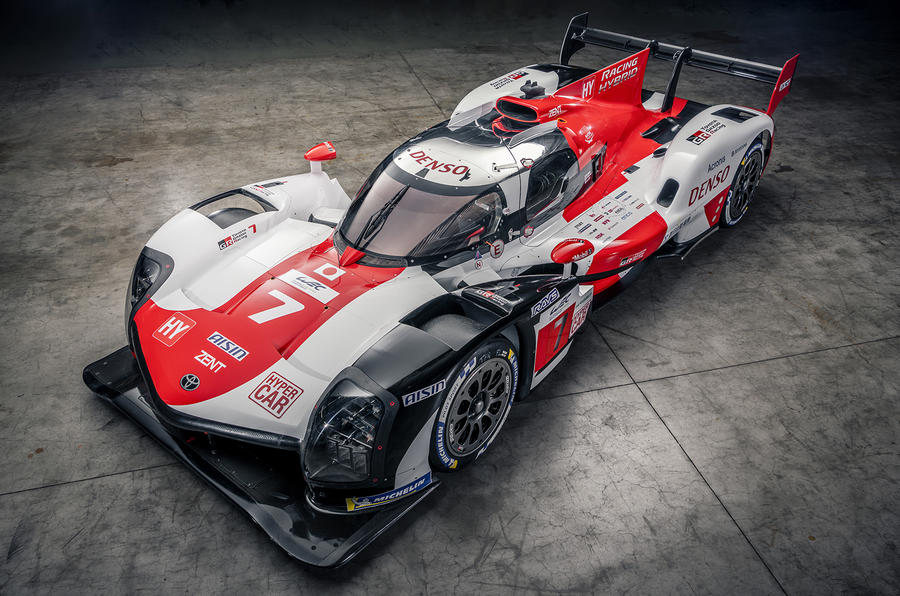Toyota has revealed the new GR010 Hybrid Le Mans Hypercar that it will field in this year’s FIA World Endurance Championship, and which previews the firm’s forthcoming GR Super Sport road-going hypercar.
The new GR010 is built for the new Hypercar prototype class being introduced into the top level of endurance racing including the Le Mans 24 Hours this year, and is the successor to the TS050 Hybrid that has won the past three editions of the French event.
Developed at Toyota’s European motorsport base in Cologne, Germany, the GR010 Hybrid features a new four-wheel-drive hybrid powertrain developed by Toyota engineers in Higashi-Fuji, Japan, based around a 670bhp 3.6-litre V6 twin-turbocharged engine mated to a 268bhp electric motor mounted on the front axle. The powertrain uses a seven-speed gearbox.
Under the Hypercar regulations, the total output of the system is capped at 670bhp, so the car will split the output between the engine that drives the rear wheels and the electric motor, which powers the front, as needed.
The power output is 32% down on the TS050 Hybrid, which was produced under the previous LMP1 regulations and used a 2.4-litre twin-turbocharged V6 with a hybrid system powering the rear wheels.
As required by the new regulations, the GR010 is 162kg heavier than its predecessor, weighing 1060kg. It is 4900mm long, 2000mm wide and 1150mm high, making it 250mm longer, 100mm wider and 100mm higher than the old car. Toyota expects lap times at Le Mans to be around 10 seconds slower.
Toyota used CFD software and extensive wind tunnel testing to hone the shape of the GR010 Hybrid. The new rules require a single homologated bodywork package, and allow for only one adjustable aerodynamic device which, for the GR010 Hybrid, is the rear wing.
The top class of the WEC and Le Mans is now open to cars built to the new Hypercar rules (such as the GR010 Hybrid and the forthcoming car from Peugeot), the LMDh rules that Porsche’s forthcoming contender will run to, and adapted LMP1 cars such as the machine Alpine will back this year.
A Balance of Performance (BoP) system based around energy usage and weight will be used to adjust the performance of each car on a race-by-race basis.
The WEC season is due to start on 19 March in Sebring, Florida, with Le Mans running on 12/13 June. Toyota Gazoo Racing will retain an unchanged line-up for the two cars it will run in this year’s WEC. Reigning world champions Mike Conway, Kamui Kobayashi and José María López will drive the #7 car, with Sebastien Buemi, Kazuki Nakajima and Brendon Hartley in the #8.
















Join the debate
Add your comment
Think Lego could do better!, by that I mean this doesn't look like a possible road car, this is science, car science, making a race car handle etc, the pic of this car reminded me of what Lego churn out.
Effectively a purpose built racing car for the road, just like some of the GT1 cars of the mid to late 1990s. I wonder how long it'll be before these type of 'hypercars', and the regulations that govern them, will lead to a greater advantage in term of continuous development and performance compared to true hypercars that the FIA and ACO will have to reclassify them as pure-bred racers. Which is what happened to those GT1 cars when they became LM GTP cars, and included Toyota's own GT-One
Yup, new regulations are a joke. This is no more a hypercar than my ar5e, it's CLEARLY a prototype.